Skilhunt EC150 Nichia 519a Flashlight Review
The Skilhunt EC150 Nichia 519a flashlight offers high CRI output as well as an excellent (Skilhunt-standard) user interface. It can run AA, too! Read on!
Official Specs and Features
Here’s a referral link to the Skilhunt EC150 Nichia 519a flashlight product page.
Versions
There’s quite a bit to mention here. First, there are four body colors: black, coyote, orange (seen here), and blue. Next, there are emitter options, of which there are two: Nichia 519a (seen here) and Luminus SFT25R.
Price
As shown here, the Skilhunt EC150 Nichia 519a flashlight sells for $49.80. Here’s a referral link to the Skilhunt EC150 Nichia 519a flashlight product page.
What’s Included
- Skilhunt EC150 Nichia 519a flashlight
- Skilhunt 920mAh 14500 cell
- Charge cable
- Lanyard
- Pocket clip
- Manual
- Nylon mesh pouch
- Spare o-rings (2)
Package and Manual
Build Quality and Disassembly
Skilhunt alights are usually well-built, and the EC150 Nichia 519a is no exception. Maybe more importantly, the design language between this and the other Skilhunt lights is very consistent!
The threads are square-cut and lubed an appropriate amount. That spring is also removable so that the magnet can be removed, too.
The head end has a spring, too, so the EC150 is very “cell-friendly.”
Size and Comps
49.5mm x 22.5mm x 18mm and 35.5g (without cell).
If the flashlight can headstand, I’ll show it here. If it can tailstand, I’ll also show that here!
Here’s the test light with the venerable Convoy S2+. The version below is a custom laser-engraved Convoy S2+ host by GadgetConnections.com. I did a full post on an engraved orange host right here! Or go straight to GadgetConnections.com to buy your Convoy S2+ now!
Also in the photo above, my Standard Reference Material (SRM) flashlight is the Hanko Machine Works Trident, an 18350 light. While I have not reviewed or tested the Gunner Grip version seen here, I have tested a Hanko Machine Works Trident Total Tesseract in brass. I love the Trident, and it’s a striking contrast to the inexpensive Convoy S2+, another great SRM.
Below you can see the Skilhunt EC150 Nichia 519a flashlight compared to what’s probably its nearest competitor, the Emisar D3AA. By most accounts, these are very similar lights! The Skilhunt has USB-C charging but lacks secondary emitters. I find the Skilhunt to have a much higher build quality. The blue light below is the Luminus SFT25R version of the EC150, which I have also reviewed.
Retention and Carry
A pocket clip is included. It’s a pretty nice friction-fit two-way clip.
The pocket clip can be installed on the head or tail end. Each shoulder of the clip has a lanyard hole, too!
Also included is a lanyard, which attaches either through the pocket clip (less recommended) or the tailcap, where there is a hole for this express purpose.
The tailcap has a magnet, too, which is plenty strong to hold the light.
Above, you may note a new holder for my magnetic-tailcap items. That’s the Exceed Designs Hyzer Titanium Mini Hatchet D2 axe. The handle (as the name suggests) is titanium. But the blade is D2 steel and perfect for retaining magnetic tailcap flashlights! The Hyzer is available in a bunch of cerakote body colors as well as different thickness D2 heads.
Finally, there’s a mesh baggie for carrying the Skilhunt EC150 Nichia 519a flashlight. This always ships separately, but I manage to stuff it into the box. I do believe it’s an included accessory, though.
Power and Runtime
The Skilhunt EC150 Nichia 519a flashlight is sized for a 14500, and an appropriate cell is included. My package was the combo that includes this 920mAh 14500 seen below. It’s possible to buy two cells – I think the only (or at least “main”) difference is capacity.
The 14500 fits into the EC150 with the positive terminal toward the head, as seen below.
In case you forget that bit of information, there’s a sticker just inside the tube to help.
Here are a few runtime tests. I wouldn’t say there’s anything super surprising here. Output is very stable once a stepdown has happened, and low voltage protection is observed. There’s also a low voltage warning in the indicating e-switch. The switch also indicates the power level upon turning the H300R on. The indication it gives indicates the power level as follows:
Blue constant: 100-80% power
Blue blinking: 80-50% power
Red constant: 50-20% power
Red blinking: 20-0% power
A bonus feature in Skilhunt products that run one 14500 cell is that running one AA cell is also an option!
Charging
The Skilhunt EC150 Nichia 519a flashlight has built-in charging. One huge bonus here is that charging isn’t Skilhunt’s proprietary magnetic connector, but a standard USB-C port!
I am not sure that Skilhunt says this in any of their marketing, but this style of charging port looks similar to others that are the waterproof variety. Either way, this one has a press-fit silicone cover.
A cable is included – USB to USB-C.
Charging works just great – around 1A and takes just over an hour. Termination is around 4.19V, but it seems to drift off if you leave the light on the charging cable.
Modes and Currents
| Mode | Mode Claimed Output (lm) | Claimed Runtime | Measured Lumens | Tailcap Amps |
|---|---|---|---|---|
| T1 | 950-275 | 1m+70m | 960 (0s) 884 (30s) |
3.27 |
| T2 | 570-275-180 | 3m+55m+20m | 518 (0s) 511 (30s) |
1.51 |
| H1 | 275-100 | 65m+40m | 251 | 0.63 |
| M1 | 100-35 | 180m+70m | 87 | 0.20 |
| M2 | 20 | 18h | 20 | 0.03 |
| L1 | 1 | 90h | 4 | [low] |
| L2 | 0.2 | / | 0.05 | [low] |
Pulse Width Modulation
There’s no PWM on any mode. Yay!
Click here to see a “baseline” – a chart with almost no light hitting the sensor.
Then there’s the Ultrafire WF-602C flashlight, which has some of the worst PWM I’ve seen. It’s so bad that I used a post about it to explain PWM! Here are multiple timescales (10ms, 5ms, 2ms, 1ms, 0.5ms, 0.2ms) to make comparing this “worst” PWM light to the test light easier. That post also explains why I didn’t test the WF-602C at the usual 50us scale.
User Interface and Operation
There’s a single switch on the Skilhunt EC150 Nichia 519a flashlight. It’s a side e-switch, with an indicator in the center. It’s a big, secure switch with a very positive but quiet click. I very much like this switch. The switch seems unchanged from the previous iterations of the EC-series. The user interface has been updated, but it is the same as other new Skilhunts. That’s a very good thing – it’s a great user interface.
The switch can indicate in blue and red – blue can be seen below.
The user interface could be a bit daunting, but it’s very straightforward when you get used to it. It’s also very logical and provides access to low from off, which is as close to a requirement from a user interface as I have.
Here’s a user interface table!
| State | Action | Result |
|---|---|---|
| Off | Hold | Low (Memory between L1 and L2) |
| L1 or L2 | Hold | Iterate between L1 and L2 |
| Off | Click 4x | Lockout (Three blinks of the emitter to confirm) |
| Lockout | Click 4x | Unlock to Low group (memory, can be L1/L2) |
| Lockout | Click 2x | Iterate lockout indicator^ |
| Lockout | Hold | Momentary Low group (memory, can be L1/L2) |
| L1/L2 | Click | Off |
| L1/L2 | Click Release, Click and hold | M2 |
| Off | Click | On in “Main Group” (Mode memory M2/M1/H) |
| Main Group | Hold | Mode advance (M2 > M1 > H) |
| Main Group | Click | Off |
| Main Group, Off, or Low group | Click 2x | Turbo Group (T1/T2) |
| T1/T2 | Hold | Iterate between T1 (higher) and T2 (lower) output |
| T1/T2 | Click | Off |
| T1/T2 | Click 2x | Main Group (memory output) |
| Main Group, Off, or Low group | Click 3x | Strobe Group (with memory) |
| Strobe Group | Click 3x | Previous Group (T1/T2 or M2/M1/H, depending on how you accessed Strobe Group)^^ |
| Strobe Group | Hold | Strobe Advance (S1 > S2 > S3) |
| Strobe Group | Click | Off |
LED and Beam
This is the Skilhunt EC150 Nichia 519a flashlight, so it uses Nichia 519a emitters – three of them. This emitter is a great choice for high CRI output. Other options are available for high output (more lumens)!
LED Color Report (CRI and CCT)
Skilhunt states that the Nichia 519a used in this EC150 are “5000K” and CR9080 emitters. They test a bit warmer than that, which is great! The CRI is very high, of course.
CCT (Correlated Color Temperature) refers to the measurement of the color appearance of light, expressed in Kelvins (K), which indicates whether the light is warm (yellowish) or cool (bluish). A lower CCT (below 3000K) is considered warm light, while a higher CCT (above 5000K) gives cooler, bluish light.
CRI (Color Rendering Index) is a measure of how accurately a light source renders colors in comparison to natural sunlight. Scored on a scale from 0 to 100, higher CRI values indicate that colors appear more true to life and vibrant, similar to how they would look under the sun.
Beamshots
These beamshots always have the following settings: f8, ISO100, 0.3s shutter, and manual 5000K exposure. These photos are taken at floor level, and the beam hits the ceiling around 9 feet away.
Tint vs BLF-348 (KillzoneFlashlights.com 219b version) (affiliate link)
I keep the test flashlight on the left and the BLF-348 reference flashlight on the right. These photos are taken around 18 inches from the door.
I compare everything to the KillzoneFlashlights.com 219b BLF-348 because it’s inexpensive and has the best tint!
Summary and Conclusion
It should come as no surprise that the Skilhunt EC150 Nichia 519a flashlight is good. But it’s not just good – it’s great. The feature set is robust – multiple body colors, multiple emitters (which hit different targets), USB-C charging, and Skilhunt’s great user interface.
The Big Table
| Skilhunt EC150 | |
|---|---|
| Emitter: | Nichia 519a (Triple) |
| Price in USD at publication time: | $49.80 |
| Cell: | 1×14500 |
| Runtime Graphs | |
| LVP? | Yes |
| Switch Type: | E-Switch |
| Quiescent Current (mA): | ? |
| On-Board Charging? | Yes |
| Charge Port Type: | USB-C |
| Charge Graph | |
| Power off Charge Port | “With cell: all modes Without cell and/or tailcap: no modes” |
| Claimed Lumens (lm) | 950 |
| Measured Lumens (at 30s) | 884 (93.1% of claim)^ |
| Candela per Lumen | 2.34 |
| Claimed Throw (m) | 89 |
| Candela (Calculated) in cd (at 30s) | 122lux @ 4.657m = 2646cd |
| Throw (Calculated) (m) | 102.9 (115.6% of claim)^ |
| Claimed CCT | 5000 |
| Measured CCT Range (K) | 4800 Kelvin |
| Item provided for review by: | Skilhunt |
| All my Skilhunt reviews! | |
^ Measurement disclaimer: Testing flashlights is my hobby. I use hobbyist-level equipment for testing, including some I made myself. Try not to get buried in the details of manufacturer specifications versus measurements recorded here; A certain amount of difference (say, 10 or 15%) is perfectly reasonable.
What I like
- Great build quality
- Emitter options
- High CRI (in the Nichia 519a version)
- Can run 1.5V and 4.2V cells
- Great user interface
- Available in orange body!
What I don’t like
- [This space intentionally left blank.]
Notes
- This content originally appeared at zeroair.org. Please visit there for the best experience!
- For flashlight-related patches, stickers, and gear, head over to PhotonPhreaks.com!
- Please use my amazon.com referral link to help support zeroair.org!
- Please support me on Patreon! I deeply appreciate your support!
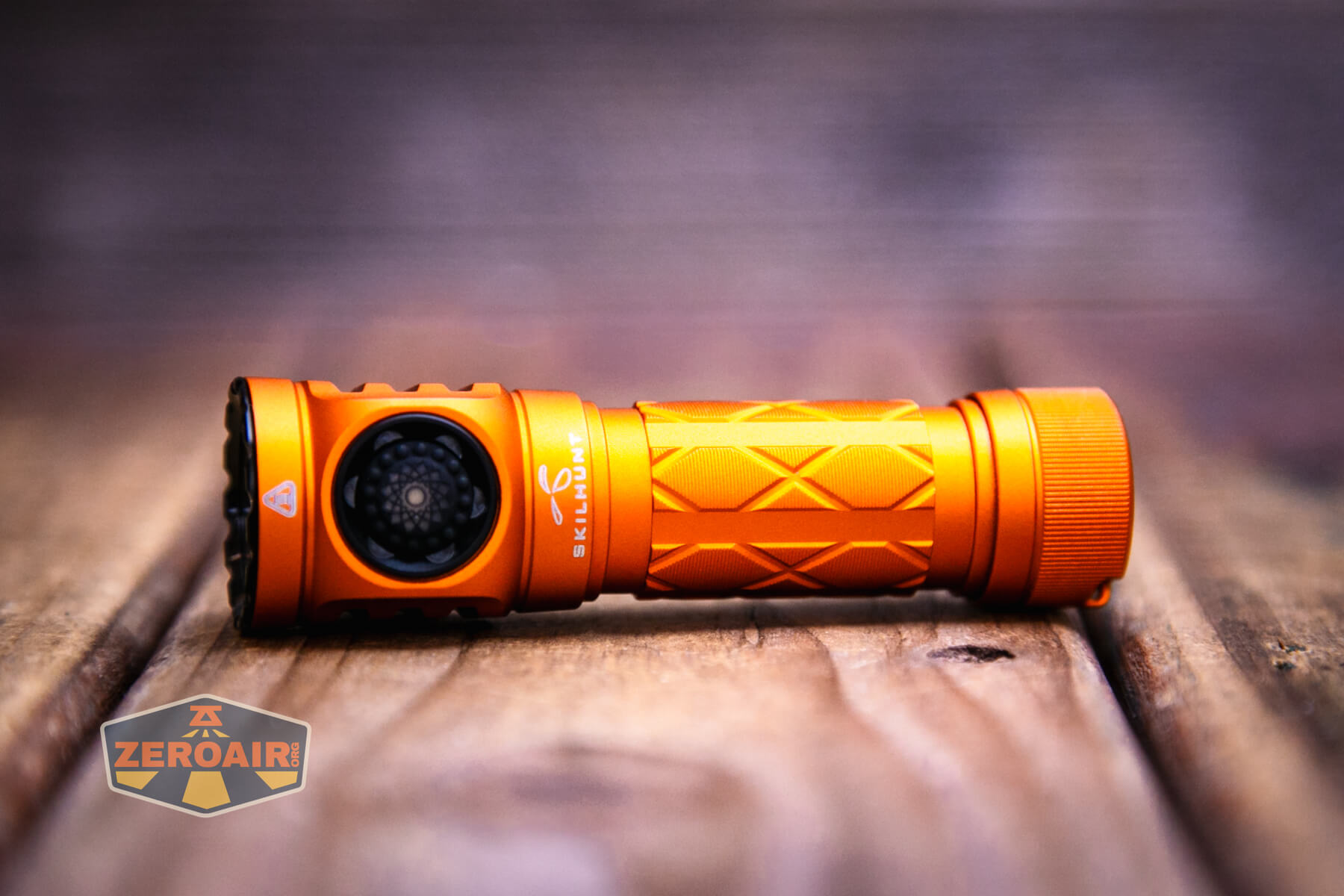



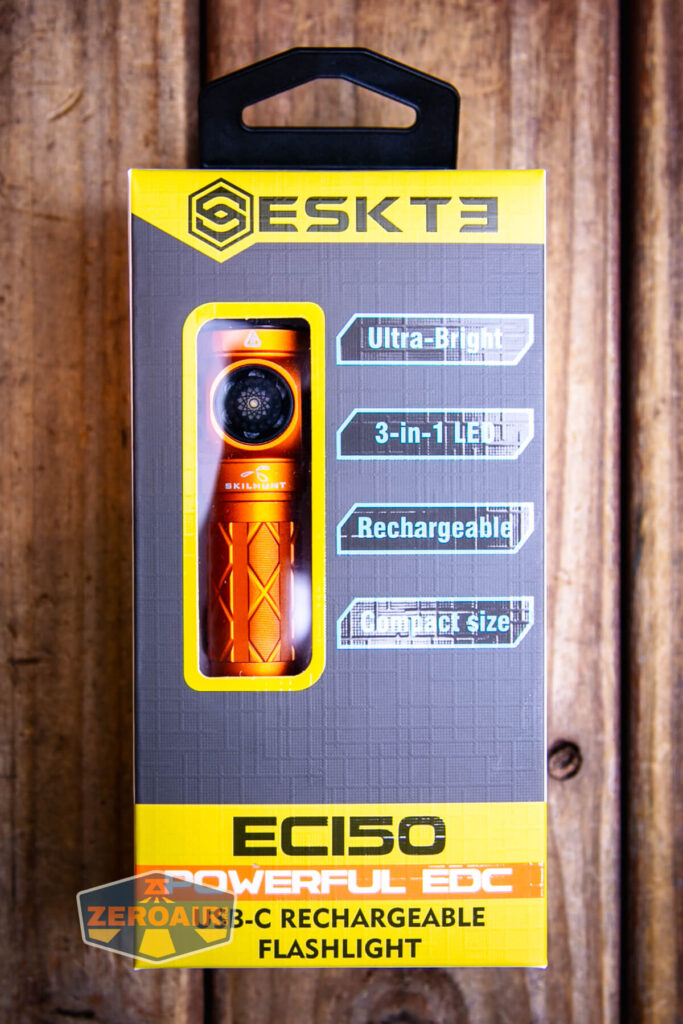



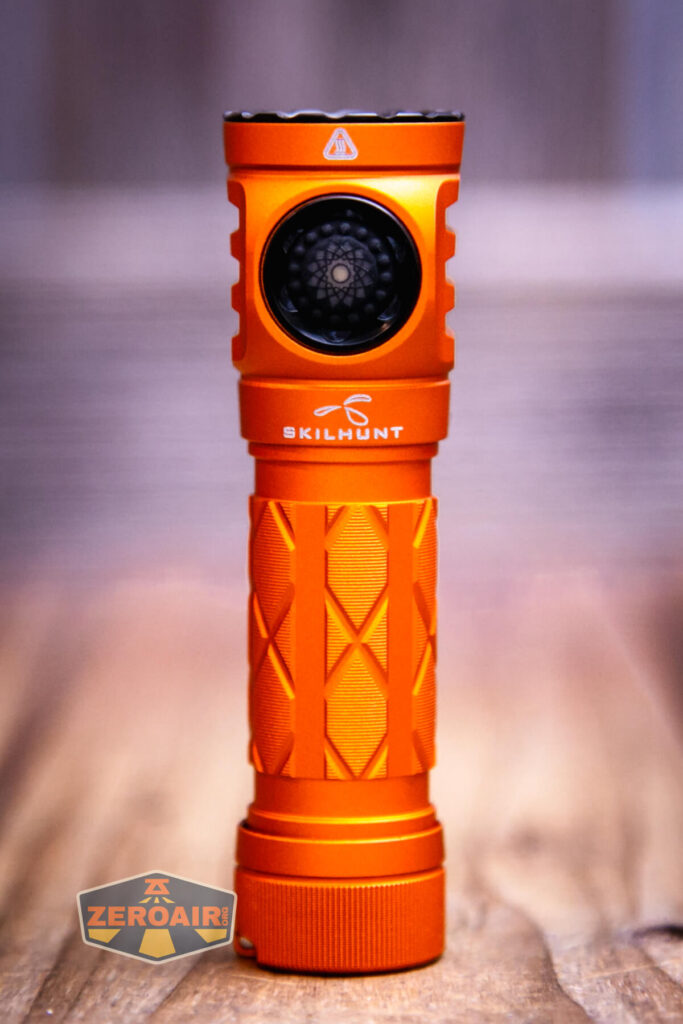
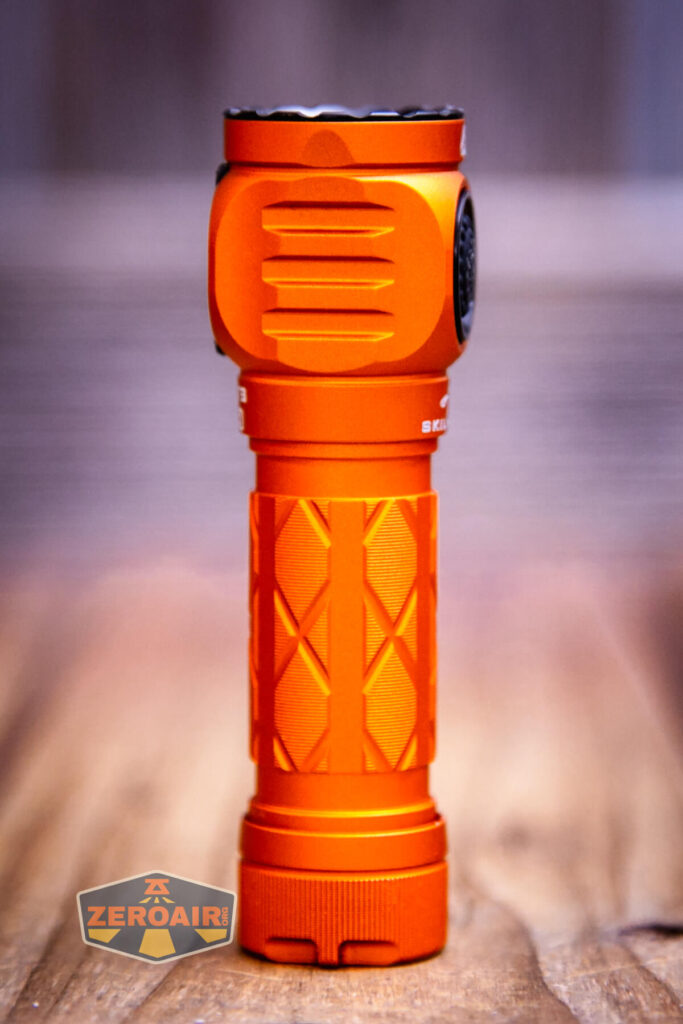
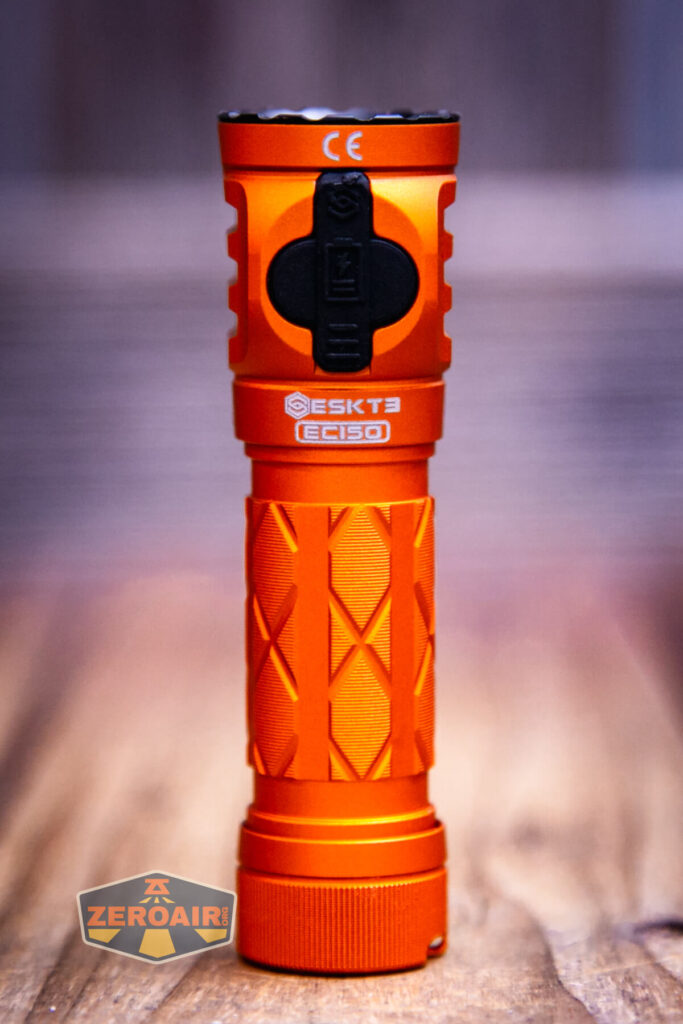




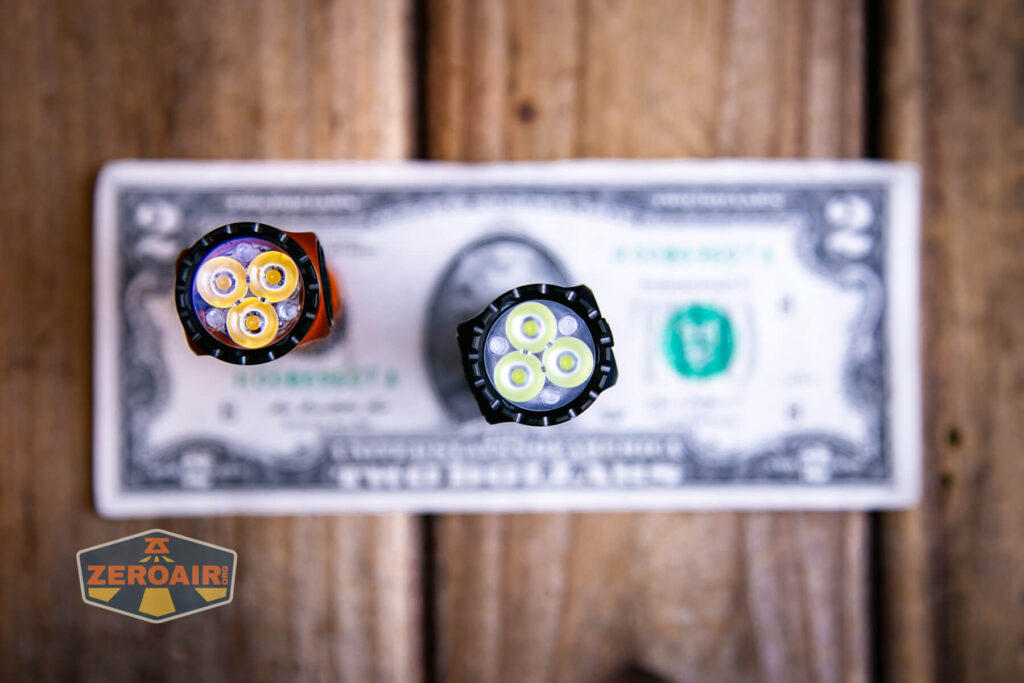



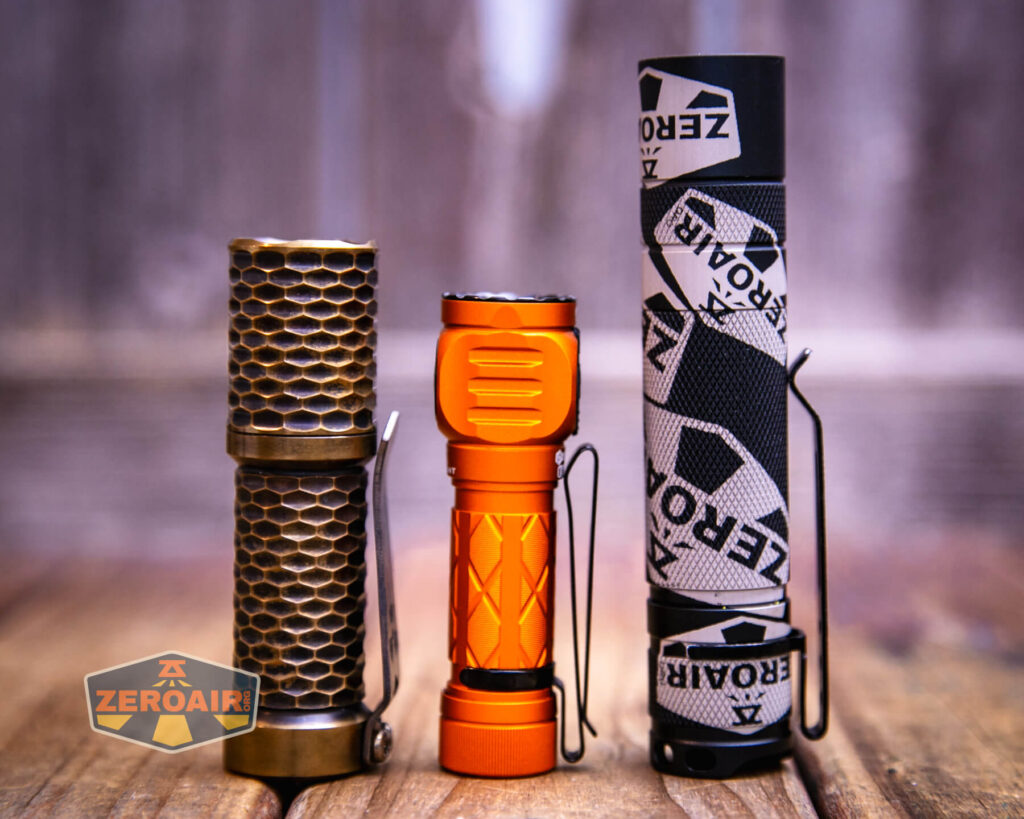
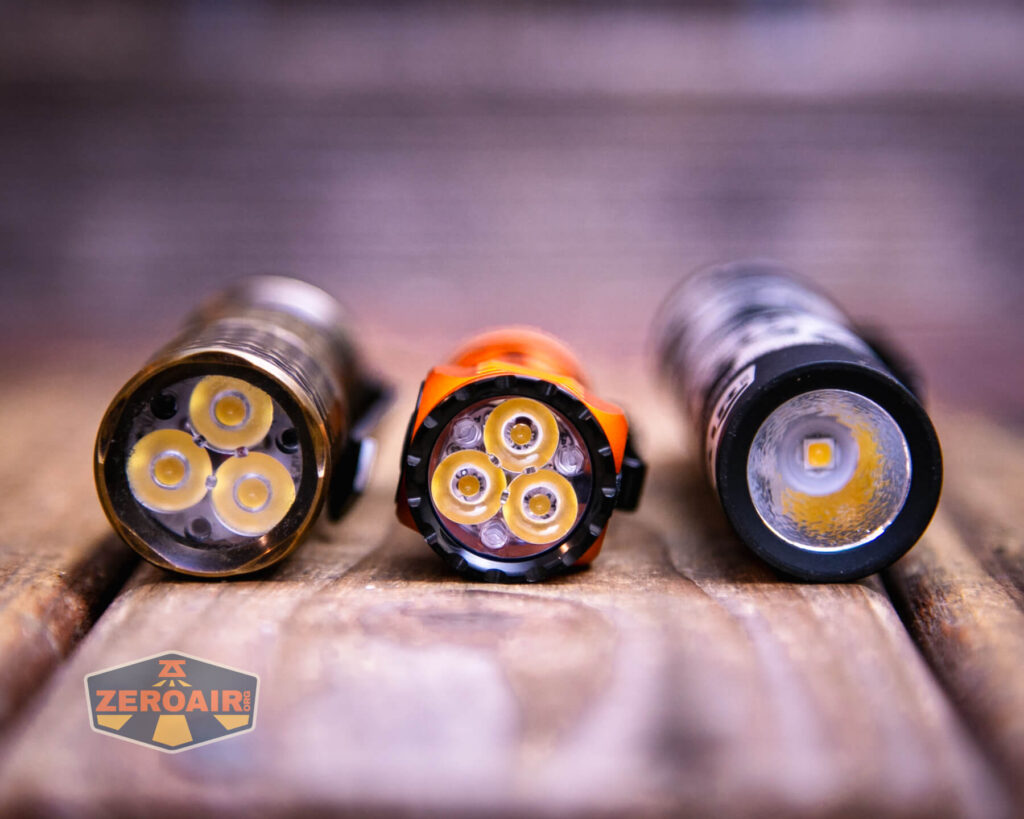

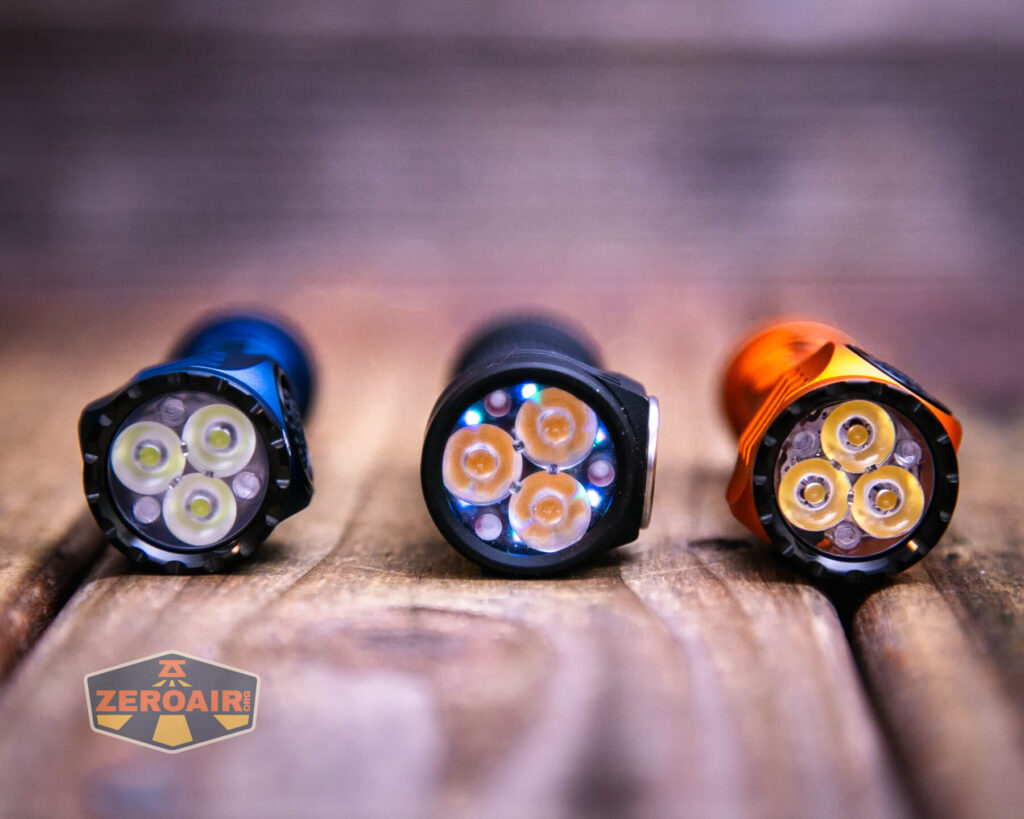
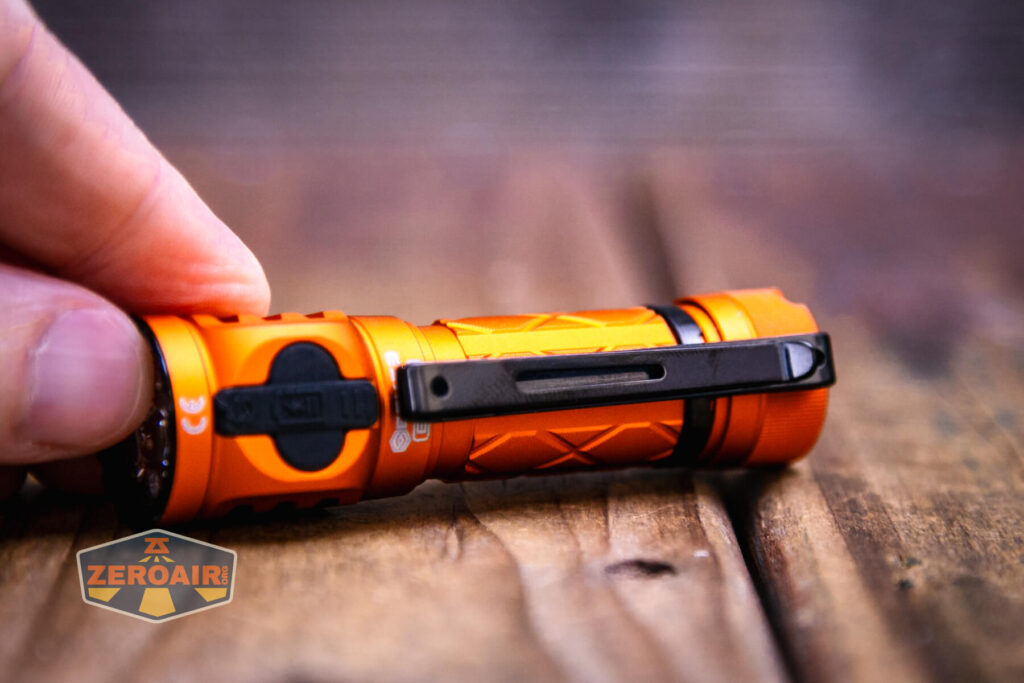

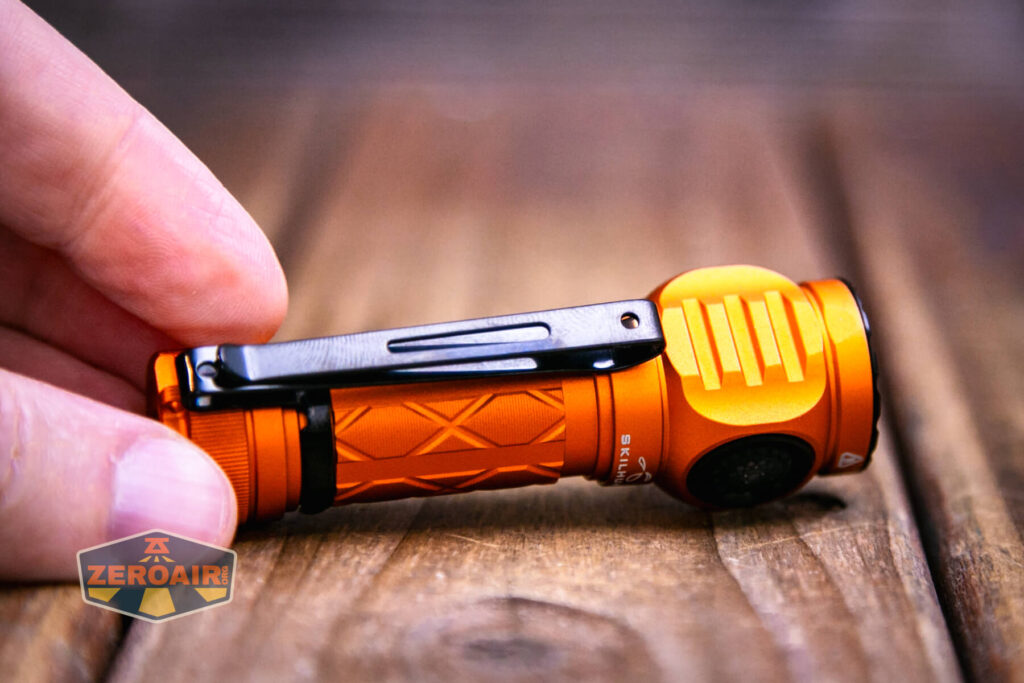

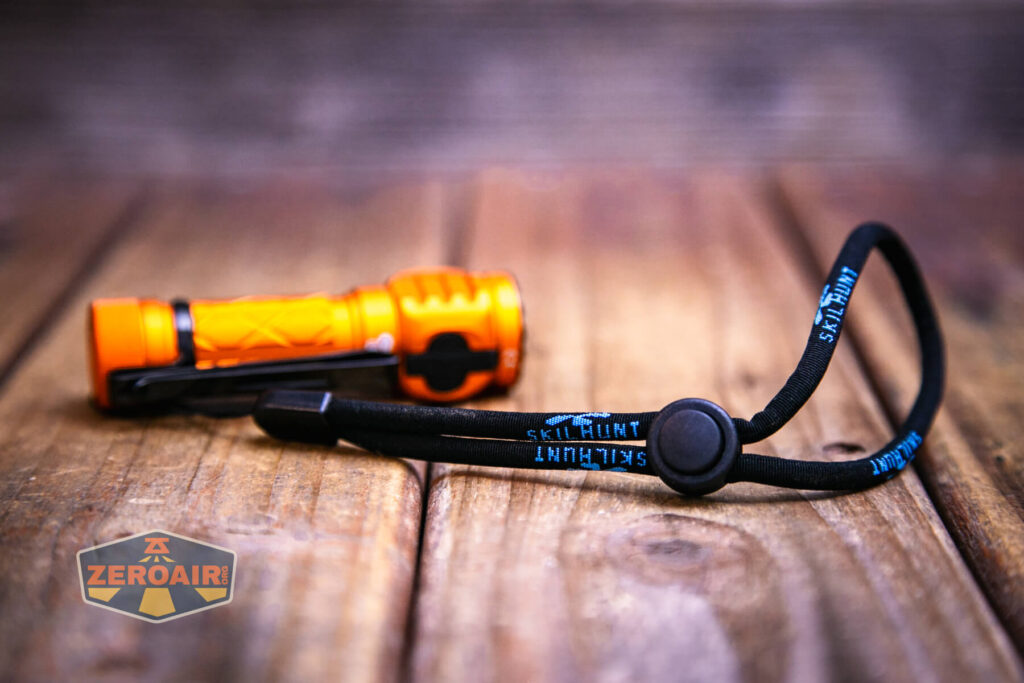

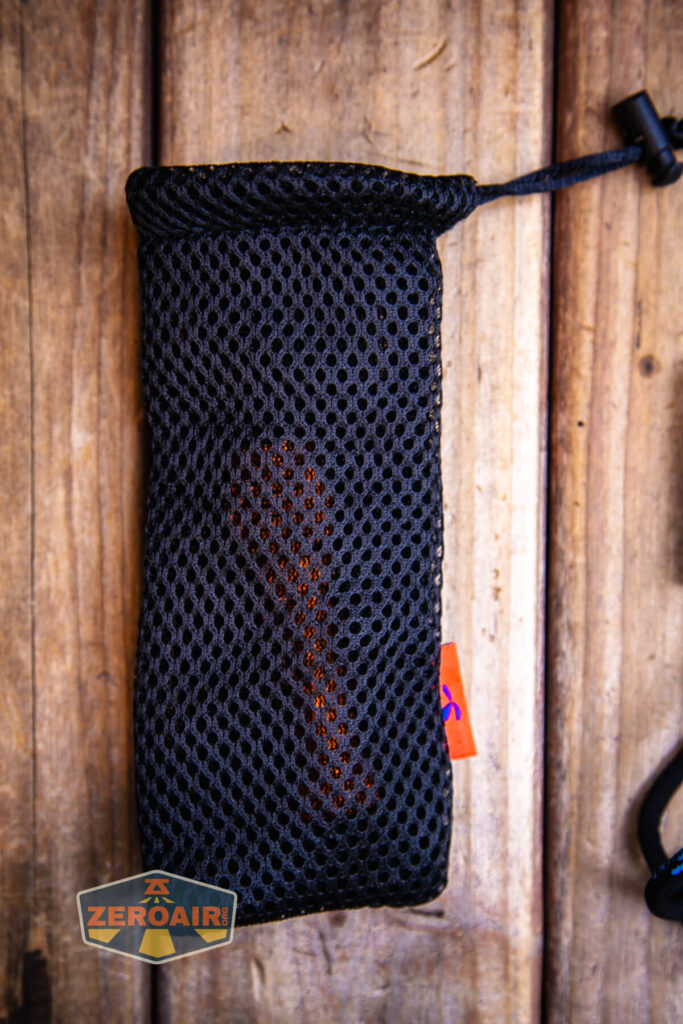

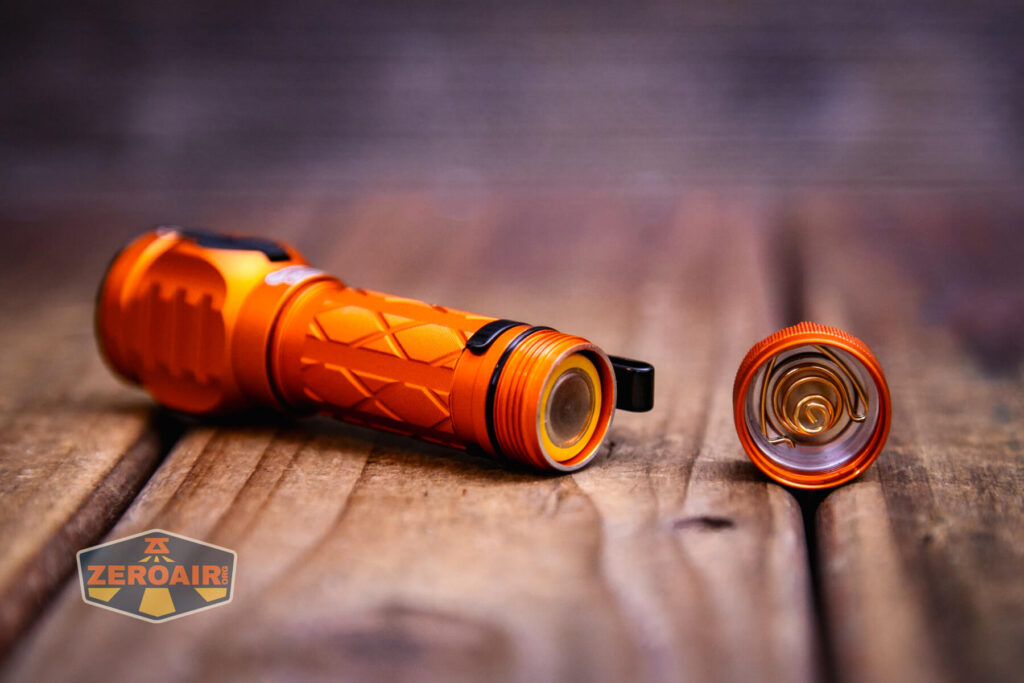

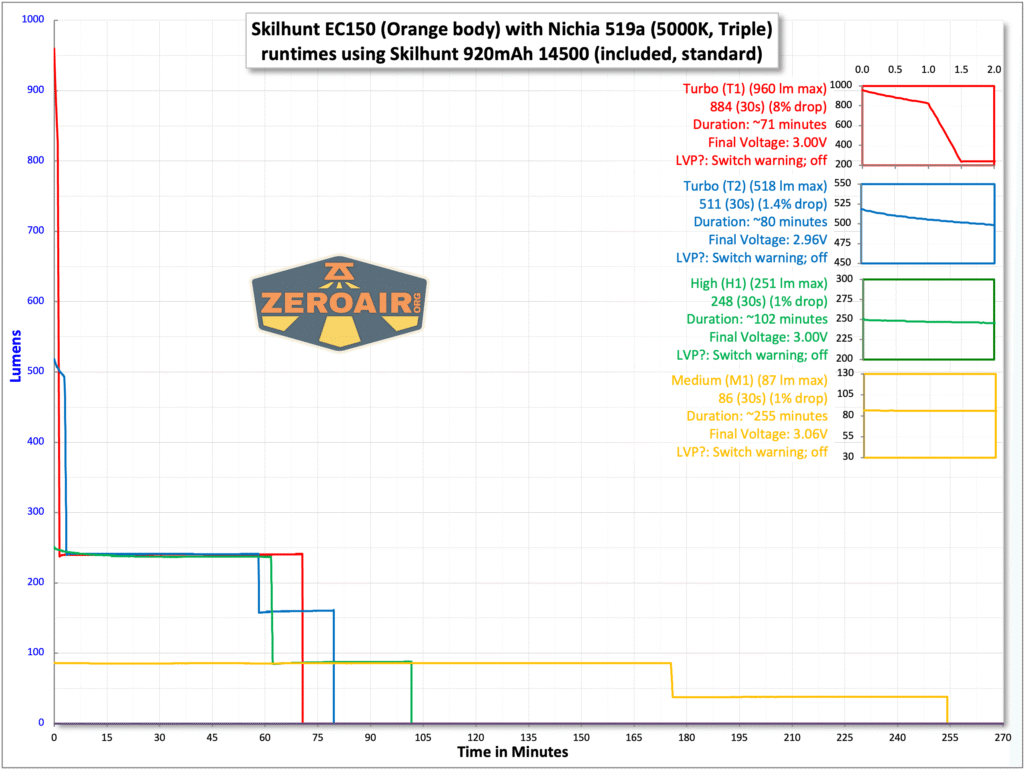

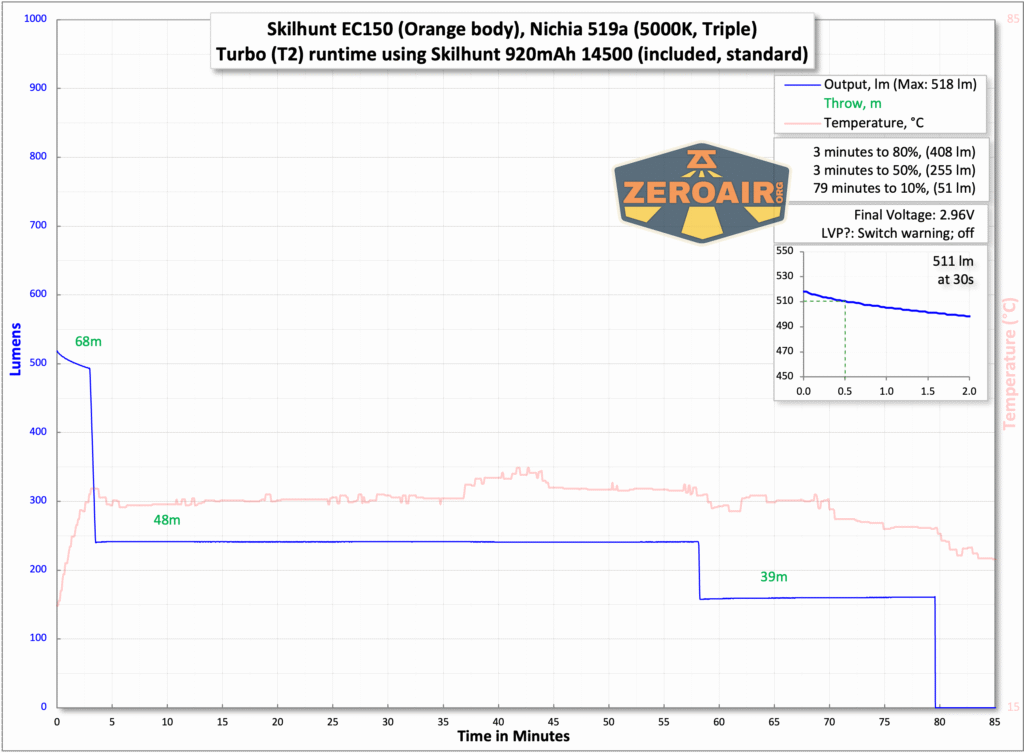


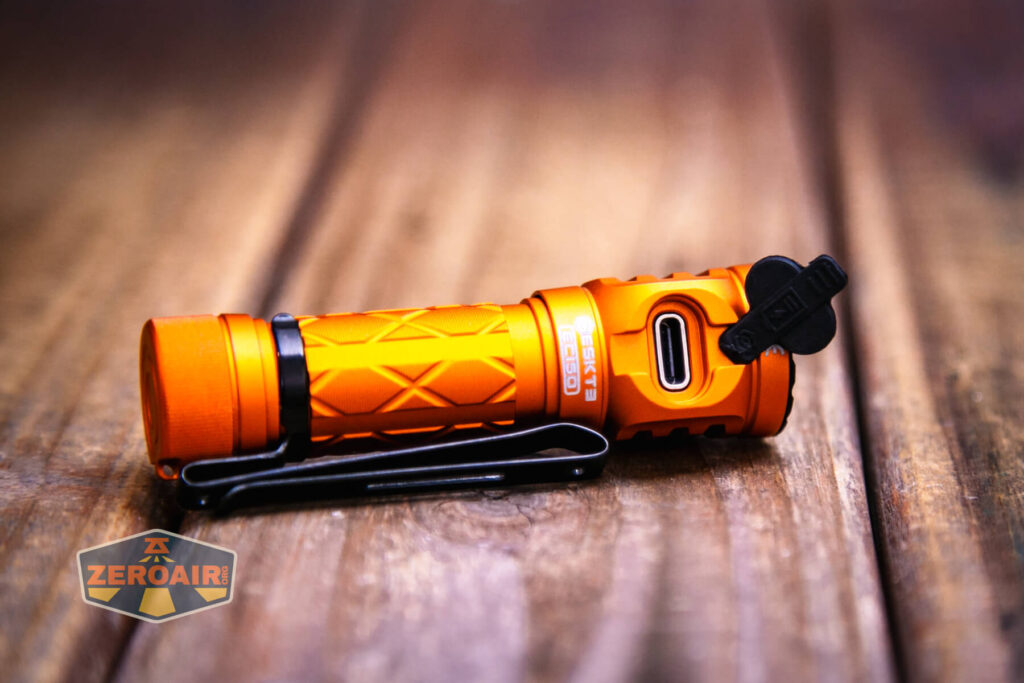

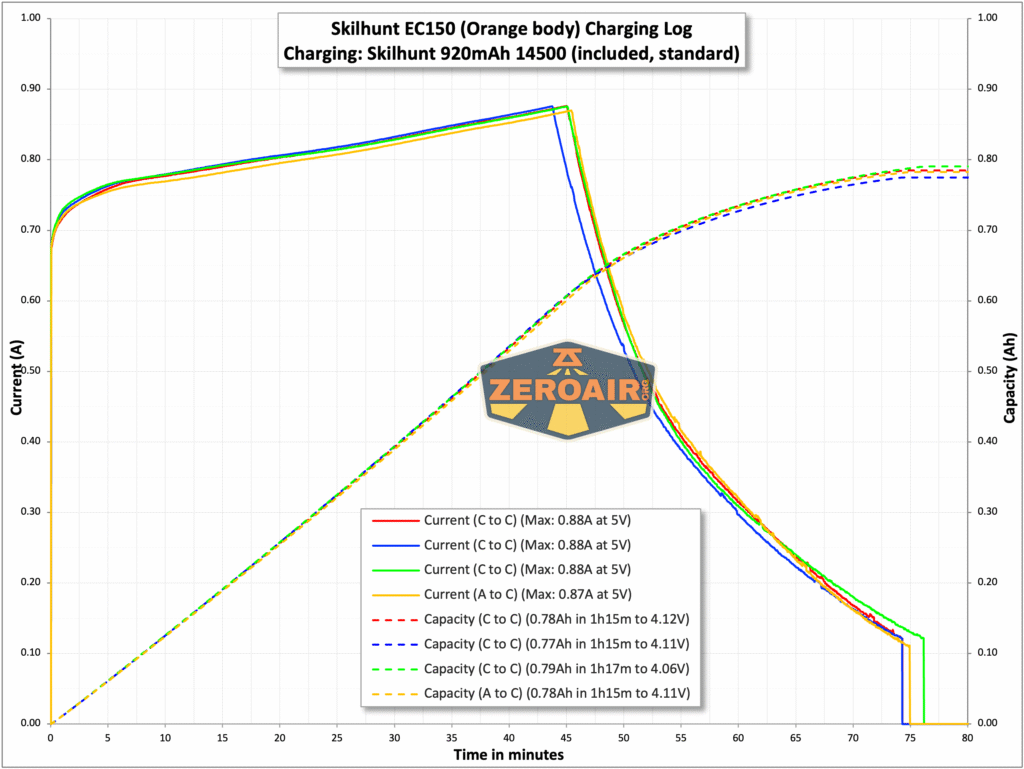
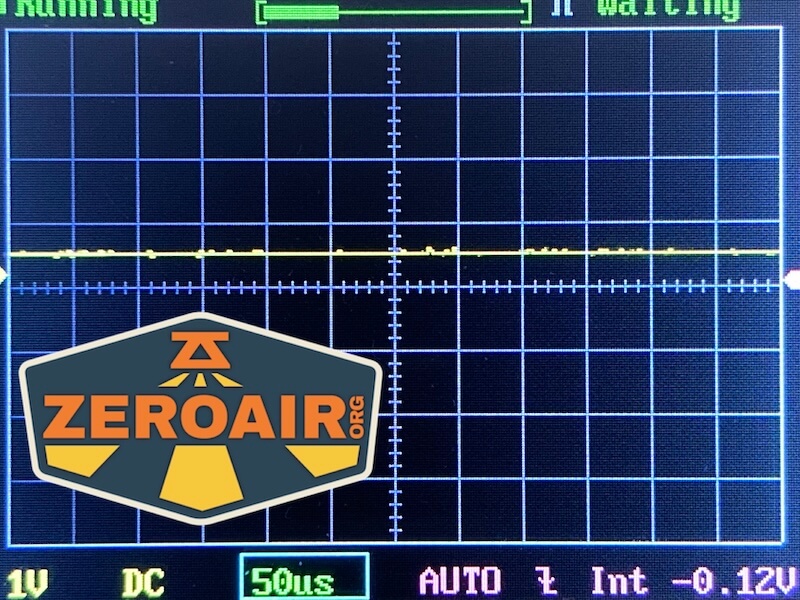


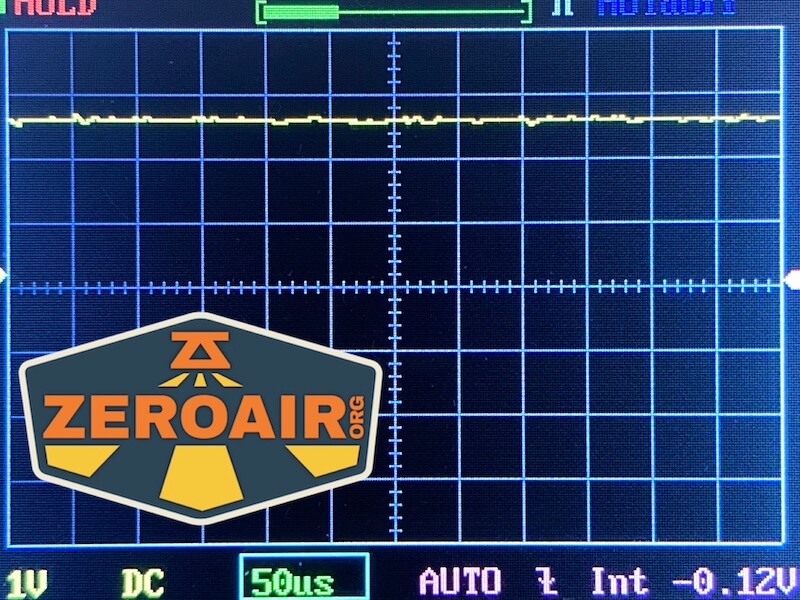


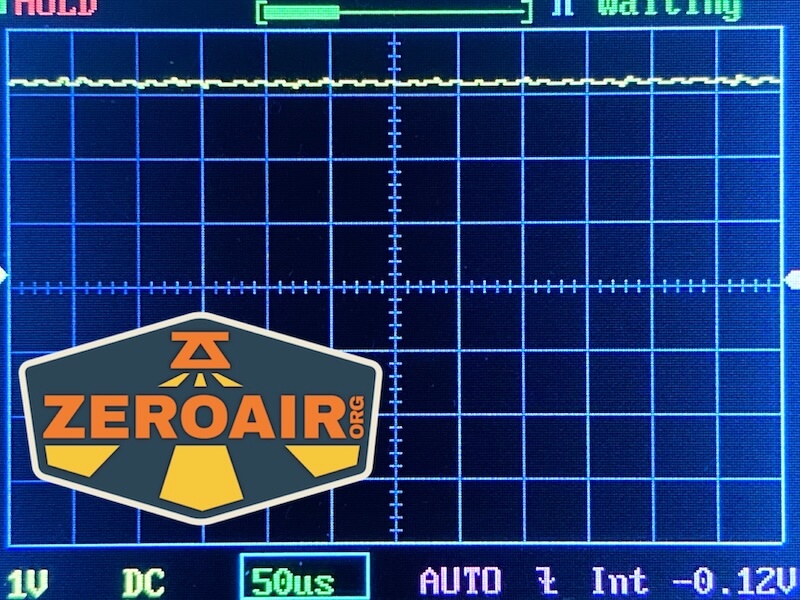



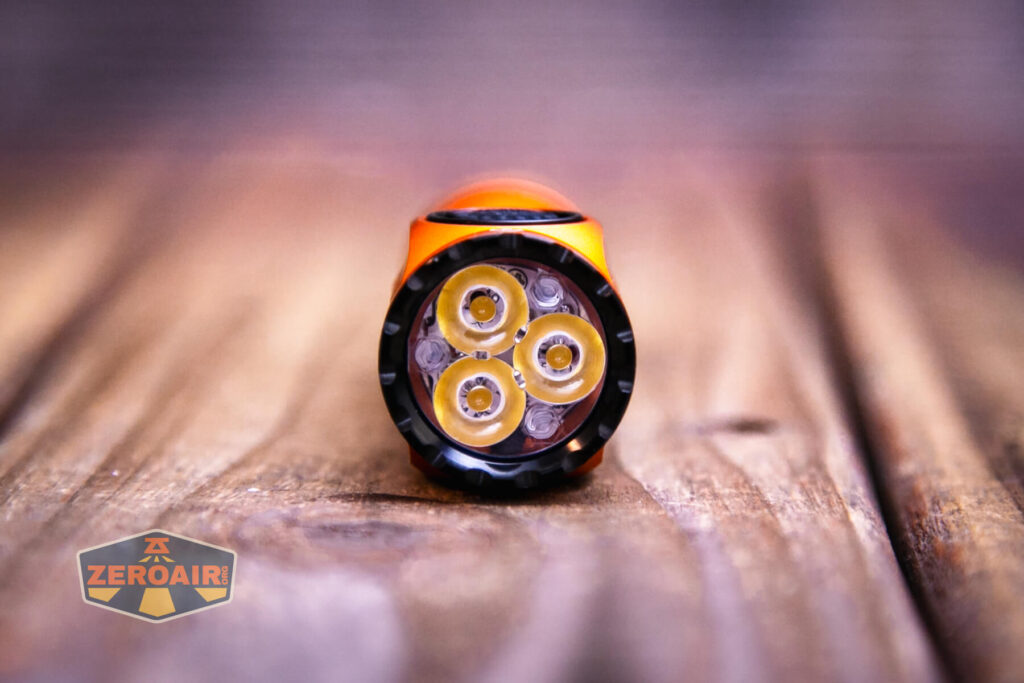

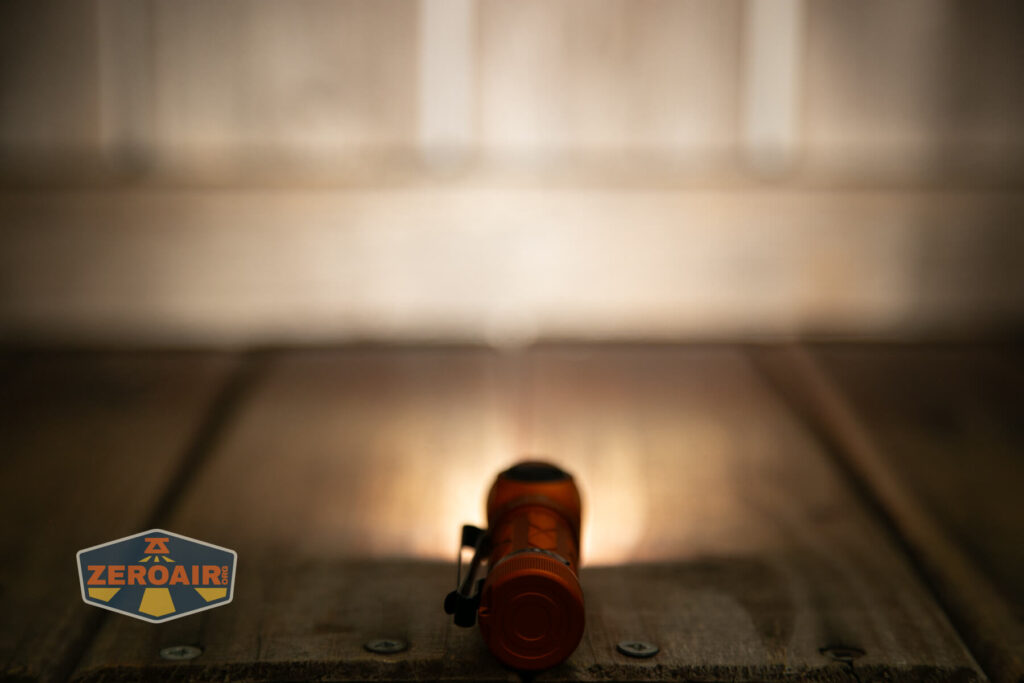
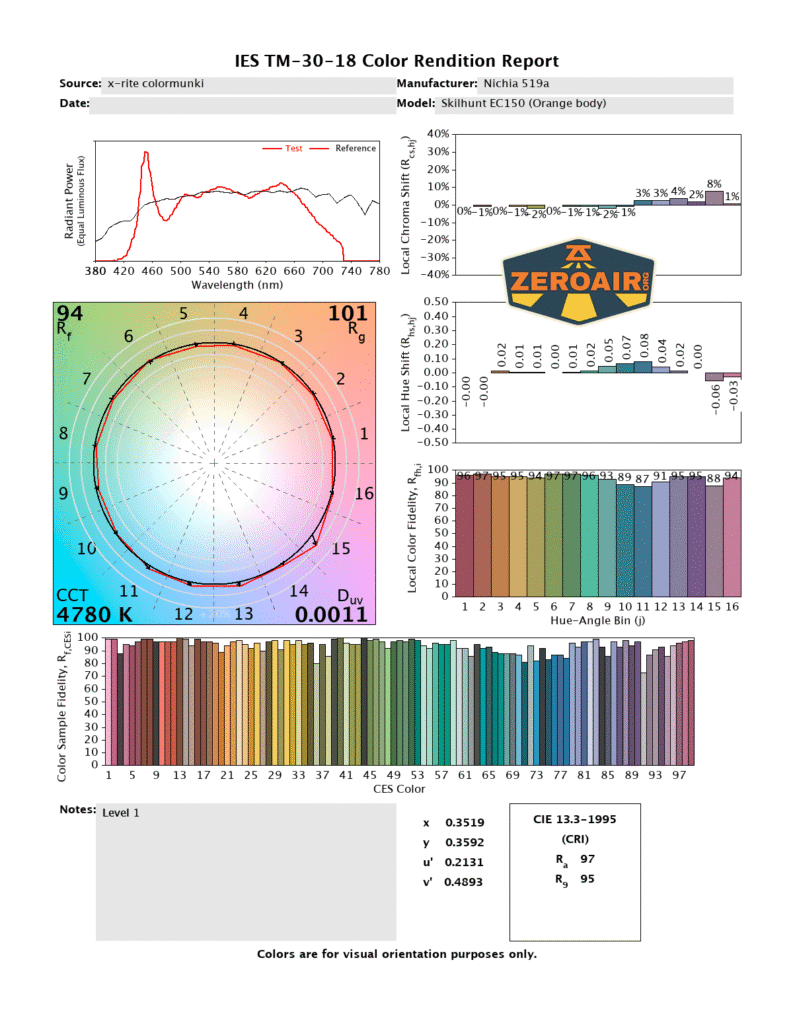

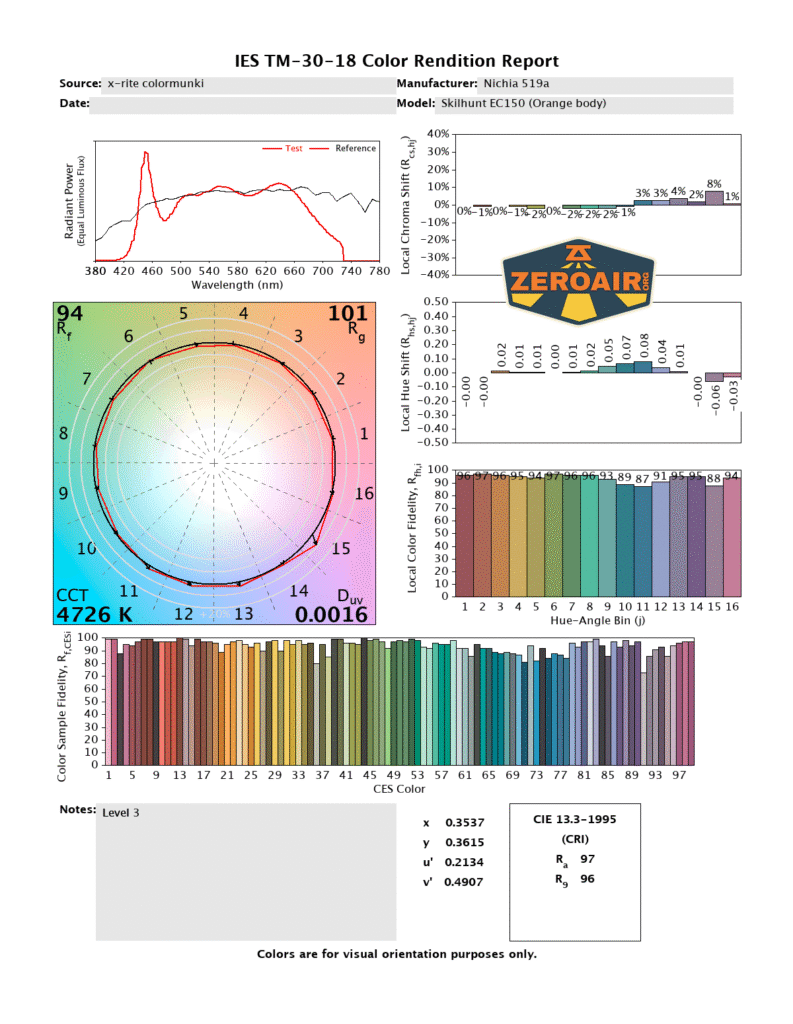
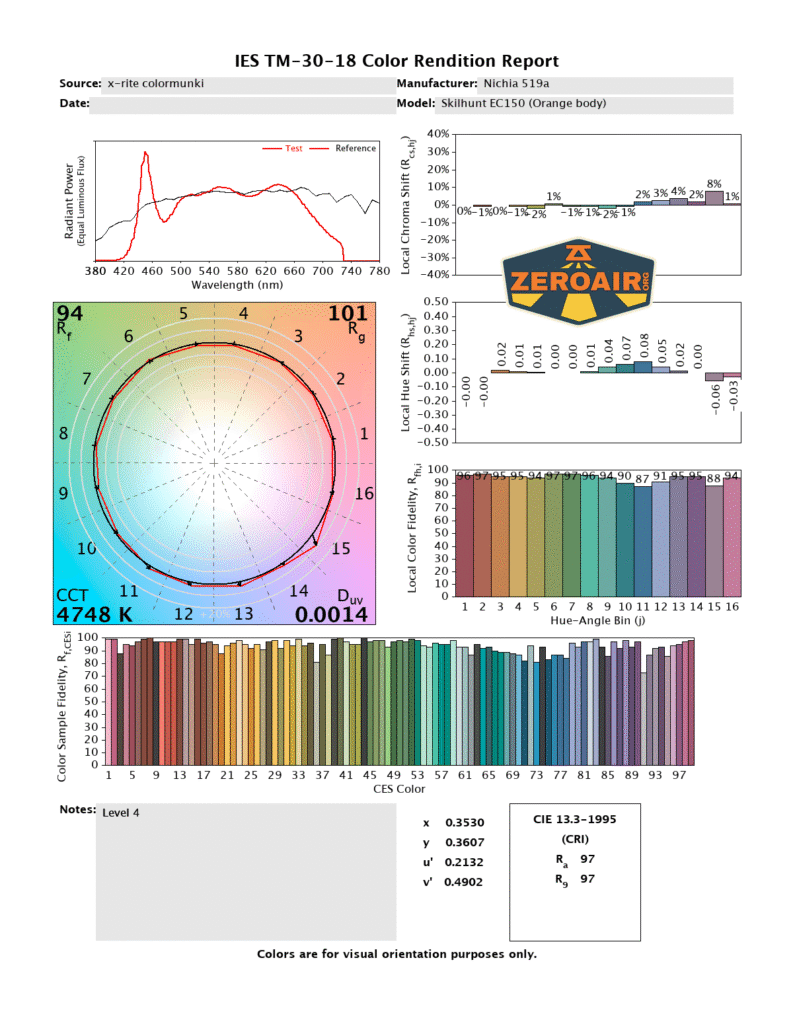

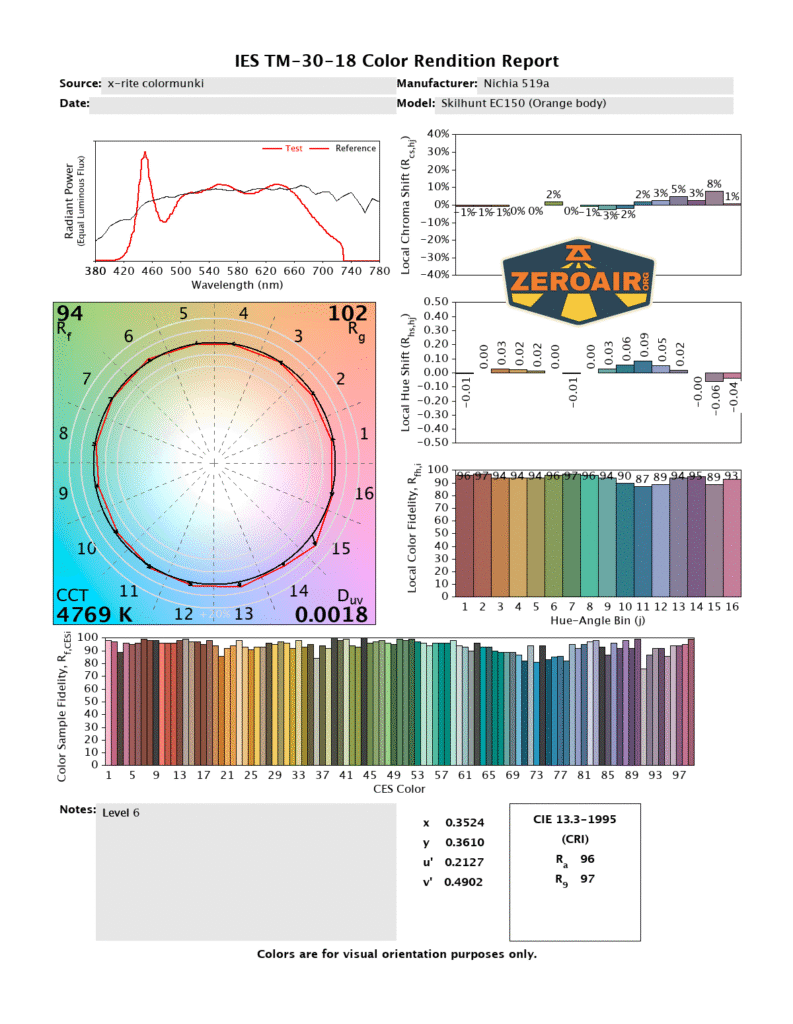


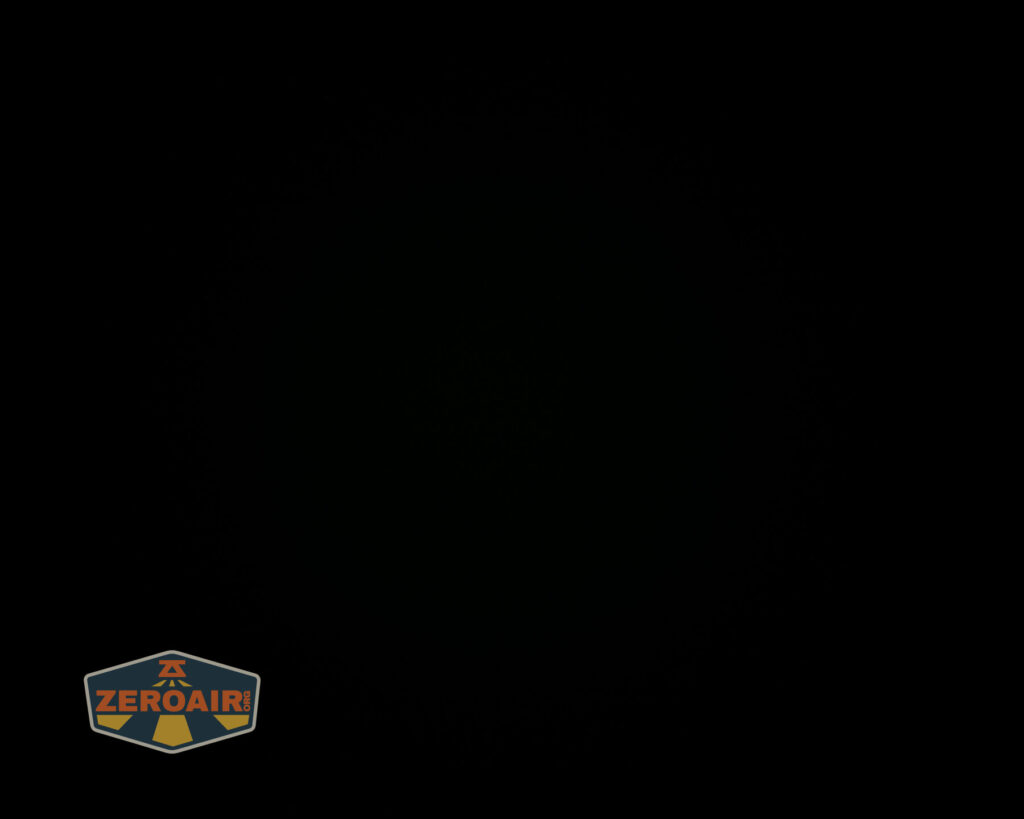


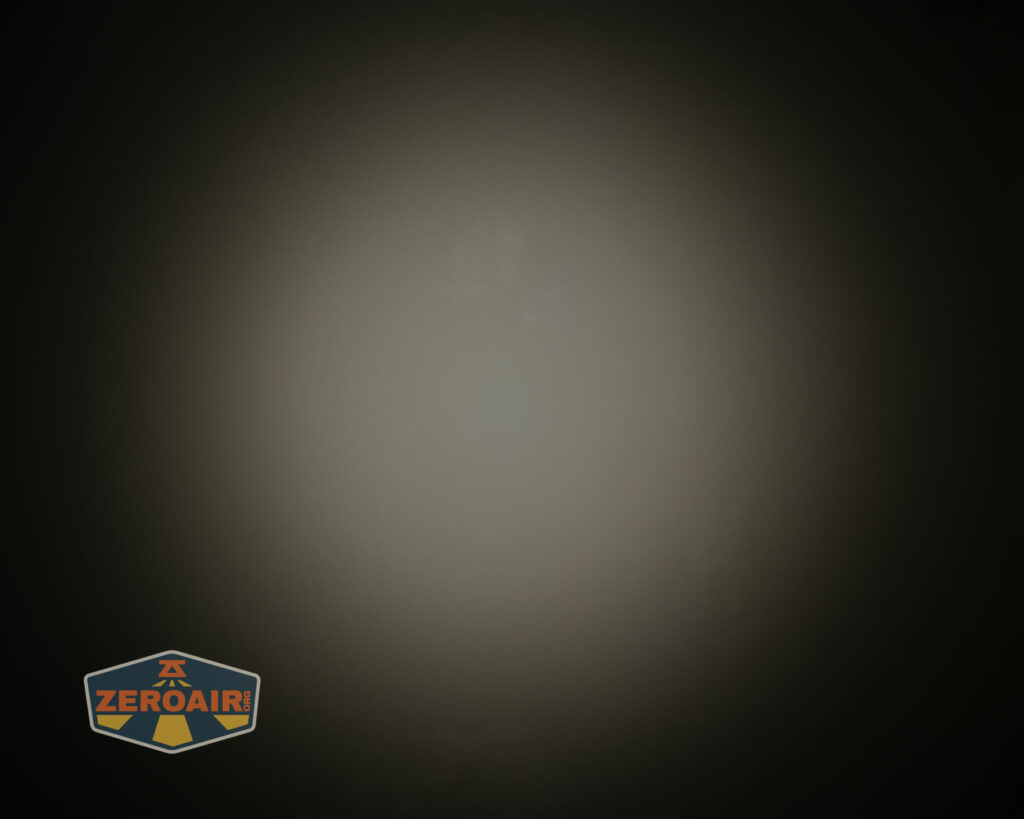

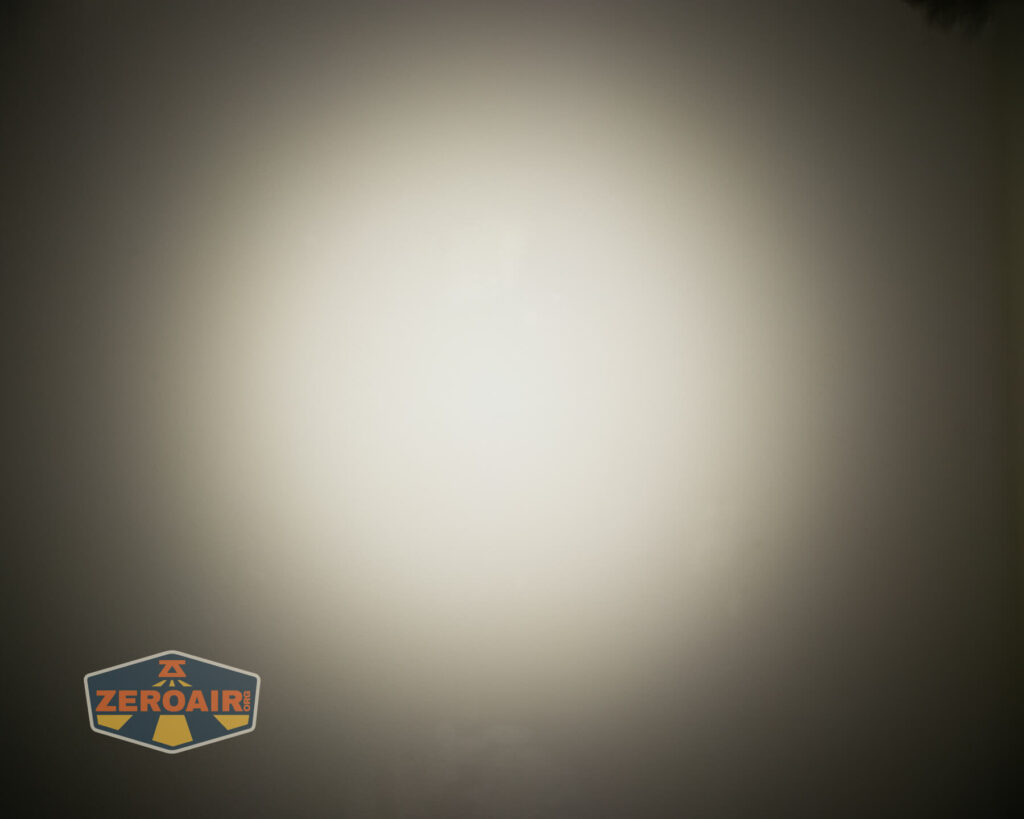
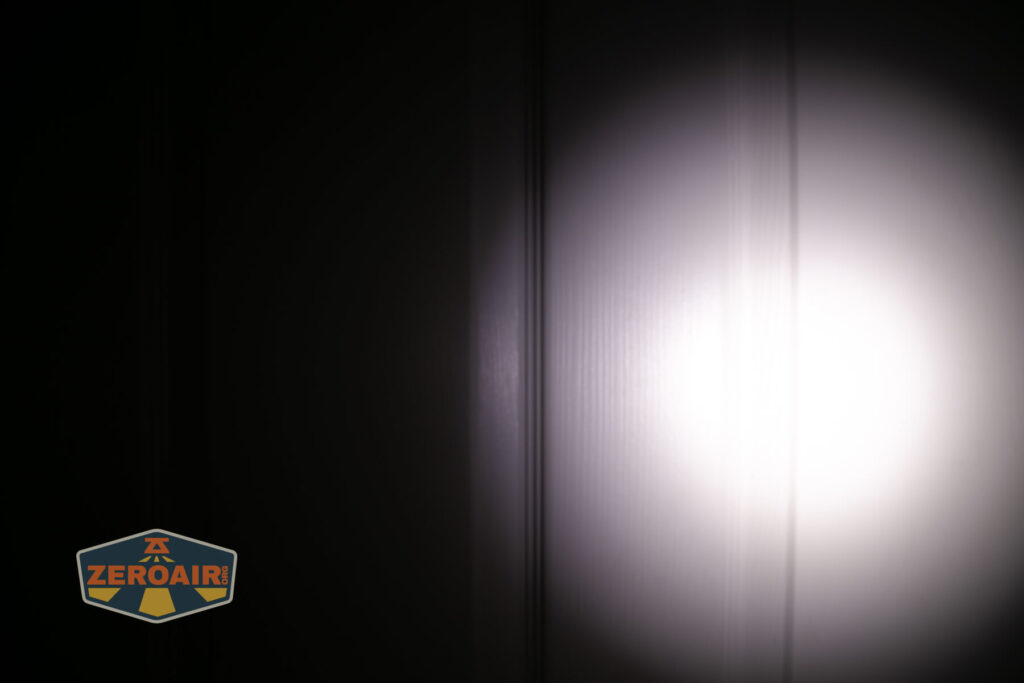

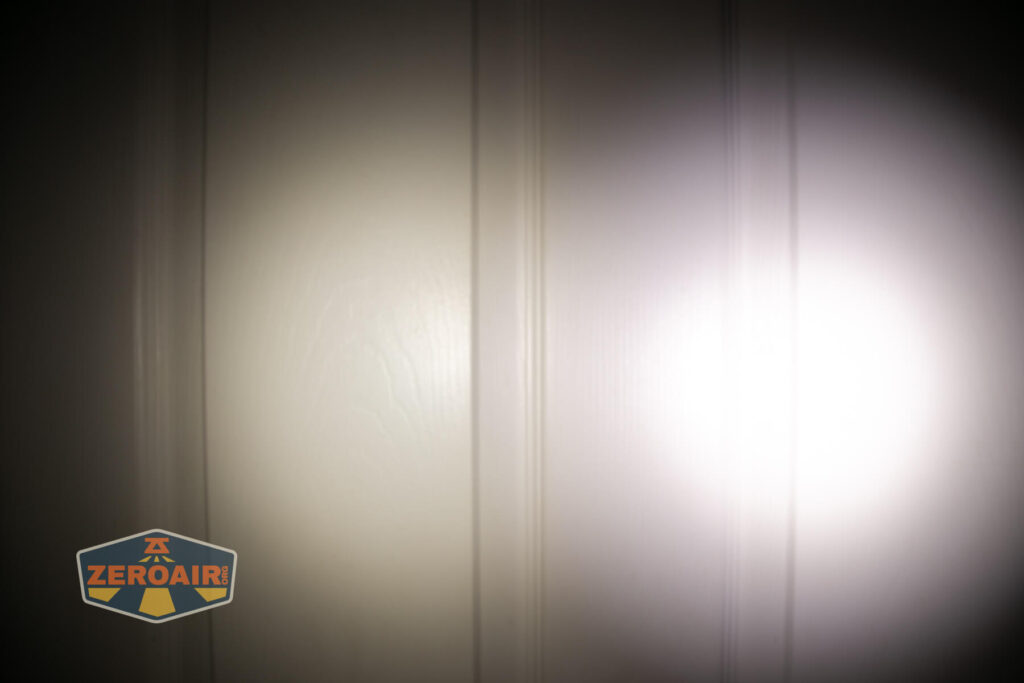
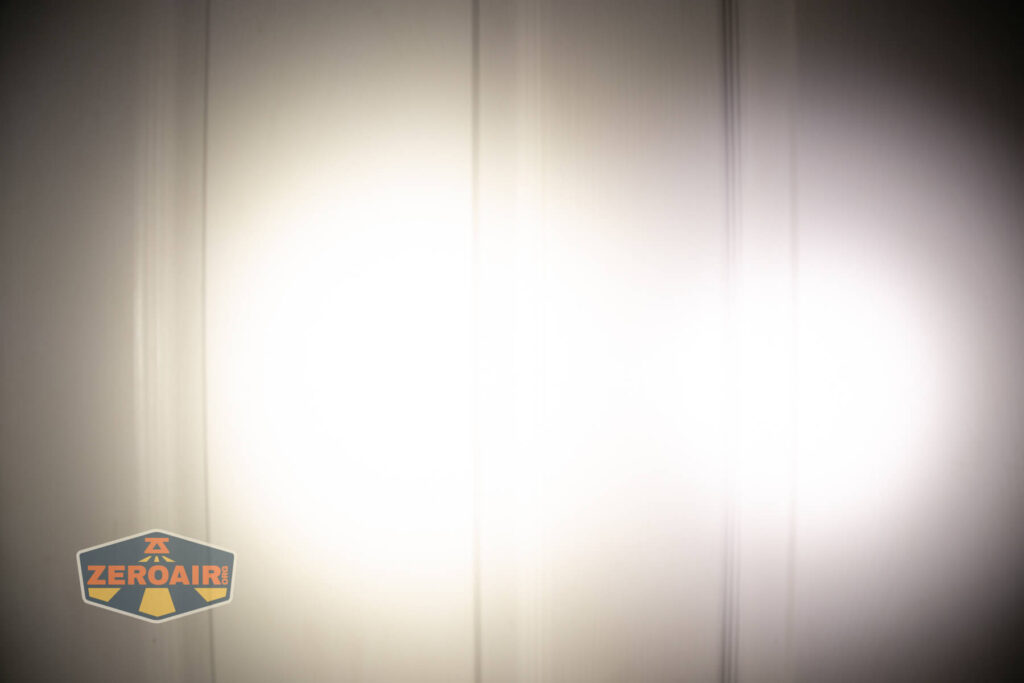
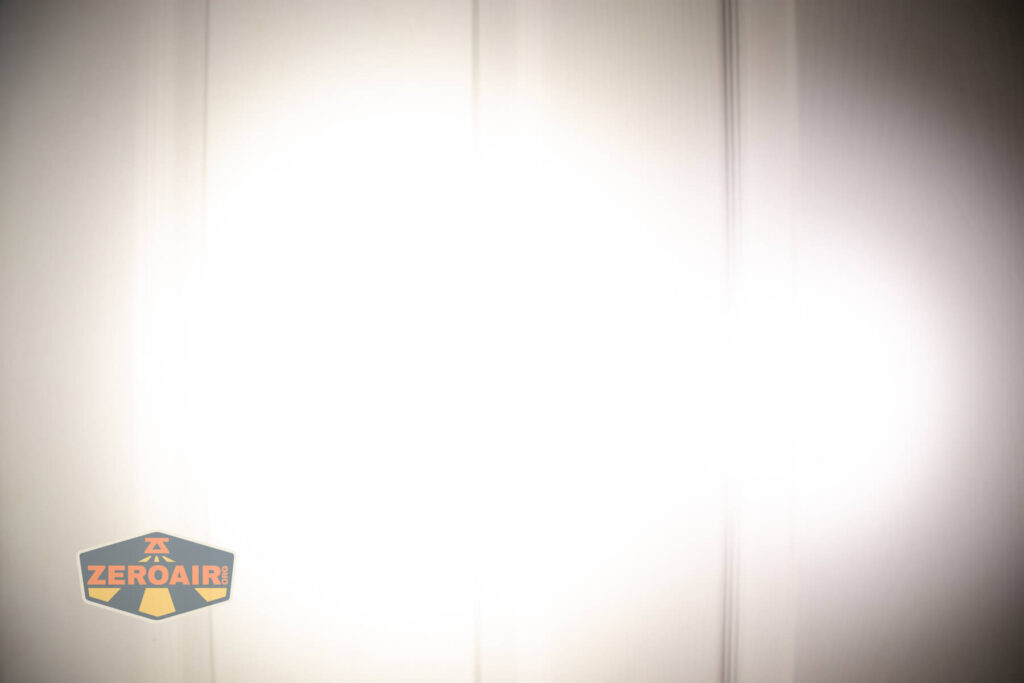
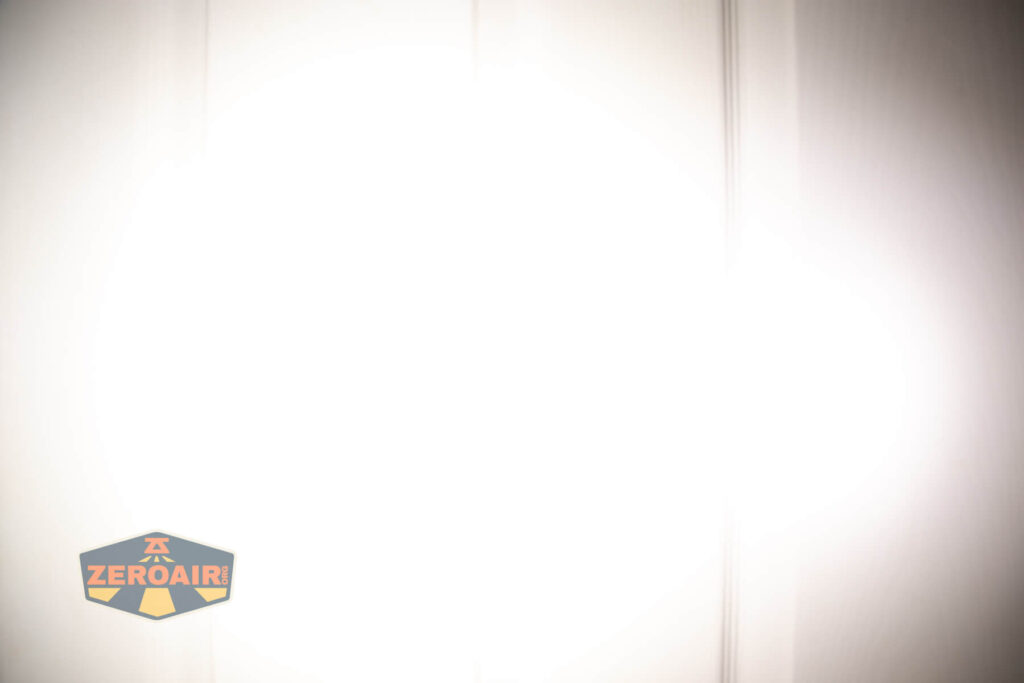

The review is very very nice~~~